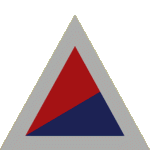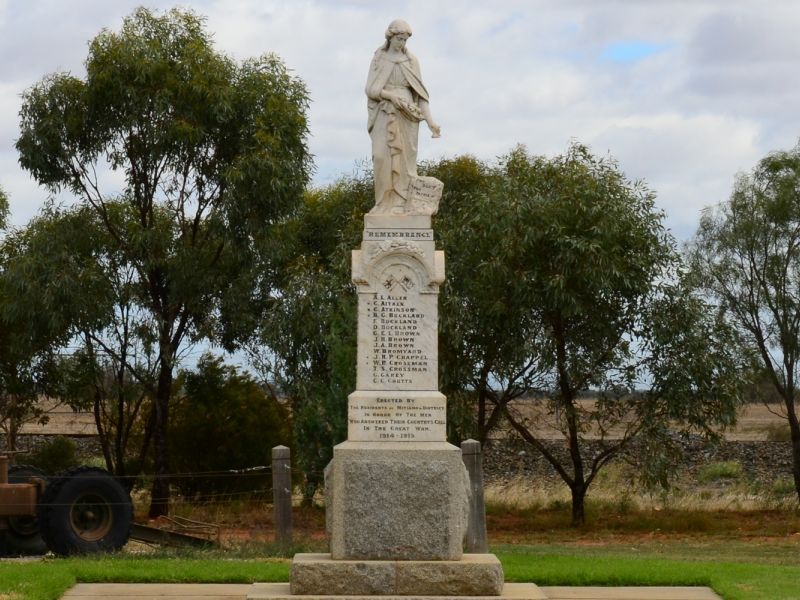Text of commemorative sign accompanying the 1942 Bofors 40 mm anti-aircraft gun at the memorial
Mitiamo Memorial Corner gun information sign
Photographed and transcribed 23 July 2025 - the sign is now largely illegible
The Present
The restoration of the Mitiamo War Memorial Corner in 2008/2009 was made possible by members of the Mitiamo community, a Victorian Government Grant – Restoring Community War Memorials, and technical assistance from Loddon Shire Council staff.
As is common in rural areas, locals donate time and effort to maintain these important monuments for those who came from the district, for the ones that returned, and those that never came home.
The Weapons
After the First World War the Government gave Mitiamo a German machine gun to place at the Memorial Corner. This stayed on the site until WW2 began and metal was required for the war effort. The machine gun was requisitioned by the war department and believed to be melted down.
Many years after WW2, Mitiamo gained access to the anti aircraft gun you see displayed, which has proudly stood at the Memorial Corner since arriving on the back of a local farmer’s truck in the sixties. For a lot of those years the gun was fully movable and possibly even functioning.
The anti aircraft gun is a 40 mm Bofors. This particular model has a Bofors Mark I breech barrel assembly mounted on a Mk 3 platform (carriage). Both the breech and the platform have a build date of 1942.
Variations to the breech/platform combination seemed to be fairly common as the equipment was highly versatile. Such versatility could ensure appropriate breech to trigger configurations (customised on site) for the various battle theatres that this weapon served on land and sea, including self propelled vehicles such as the deck of a naval vessel, or land based vehicles such as half tracks, tanks, light trucks and even heavy jeeps.
The Mark 3 platform of this exhibit shows various design details suggesting that it was used in desert campaigns. Features such as original balloon tyres, a breech transport cradle that holds the gun’s barrel below horizontal (to prevent desert sand from entering the barrel and jamming the firing mechanism), and also the lack of independent suspension, which was a common feature of the Mark 1, 1A & 2 (on the four wheeled versions).
The Bofors 40 mm anti aircraft gun originated in Sweden, with the first production model released in 1932 for use on Swedish naval vessels.
The anti aircraft gun attracted international interest because of its performance and reliable rate of fire, and was adopted by both sides during WW2 (by the British Army in 1937). The single barrelled air cooled version mounted on a wheeled carriage, as exhibited here, remained in production until 1943.
A success on land for the British Army, the Royal Navy started fitting the single barrelled air cooled version onto its ships in 1941, before adopting a purpose designed twin barrelled water cooled version in late 1942. Later a six barrelled water cooled version was developed. This version was radar directed, weighed 21 ton and remained in service with the Royal Navy on battleships such as HMS Vanguard until the 1970s.
 David McDonald
David McDonald